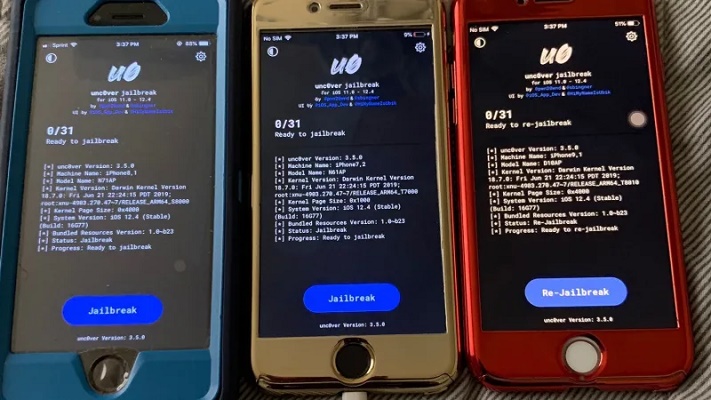
Sometimes we want to install an application on our mobile and when looking for it in the Play Store, we find that the device is not compatible with it, this may be for hardware or operating system reasons.
There is also the possibility that you want to improve the performance of your equipment, to perform a specific task, or you simply want to make a system change because you got bored of the same interface as always.
For all these problems we bring the solution of the famous Rooted or Jailbreaks of the devices, whether Android or iOS. With this we tell you the pros and cons of this excellent activity, it will be up to you if you decide to do the process or not.
Index:
Jailbreak and Rooting What are they and what are the benefits of applying them ?
Both Jailbreak and Rooting are two similar procedures that provide users with the different mobile devices on which they are applied, access to higher functions in the system structure, as well as permissions to modify almost anything on the device.
As expected, this method includes a lot of advantages that we will highlight below:
- Permission to delete almost anything. This function should be used with caution, since we will have total freedom to eliminate components that can even leave the equipment without some functions.
- Access to better versions of the operating system. They have more functions and do not take up much space, both this point and the previous one, give you better control over the storage memory of the equipment.
- Ability to customize the device. It has the best preferences as we said with the most updated ROMs of our same version.
- Thanks to these ROMs, we will no longer worry about obsolete versions of the system and will have access to applications and components that allow us to fully manage battery performance, storage memory, processor frequency and power. All this is summarized in an exponential improvement in the overall performance of the mobile hardware.
- With all this potential released, it is possible that can activate functions of some components of the hardware that were not accessible before removing permissions.
- A small point to note is that if you are a developer, this experience can help you understand how the structure of the Android and iOS systems for future projects.
- Finally, we can add a substantial improvement in the level of security of the device, but only if we know how to apply so correct. Later we will mention a little of this in the disadvantages of manipulating the mobile at these levels.
What are the differences between iOS Jailbreak and Root on Android?
In order to understand the few differences that exist between the two super access procedures on Android and iOS, we will talk a little more deeply about each of them:
Jailbreaking

Apart from the functions already seen in the previous point, Jailbreaking consists of a procedure that lifts almost all the restrictions that Apple has on the equipment it manufactures. In this case the iPhone, although also It is valid for iPads.
This process disappears the limitations and allows users to install tools not approved by them on mobile phones. In addition, this also greatly increases and releases the poor customization functions that iOS devices work with.
To tell the truth, the improvements of a Jailbreak are not as substantial as the ones we will notice on Android.
Rooting

It is well known that the Android operating system is much more liberal in many ways compared to iOS. We even know that even without the Root process activated, in this system we can install unofficial applications just by making small changes to the configuration.
Then, being such a versatile and customizable system, imagine all the potential that you reveal with applying Rooting. Well, as we said, in this case all the benefits of the first point are fully applied.
Based on all the points examined, we can say that there is no major difference between root and jailbreak. Unless one is the name used for iOS devices and the other for Android devices.
Of course, while the Jailbreak only presents some improvements in terms of mobile personalization, and very little freedom in terms of hardware. The Root does provide complete freedom of visual modification and personalization of the equipment. What brings a great field to get the most out of its hardware.
What are the risks and disadvantages of controlling your kernel smartphone?
Now let’s see what are the disadvantages you will have to deal with if you choose to activate the super user mode on your mobile:
- The first disadvantage that is undoubtedly of great weight, is the fact that when doing a root or a Jailbreak the mobile loses all the guarantee that it could have, is that is why it is recommended that it be done with devices already a little used.
- Although these procedures are not illegal, most manufacturers disregard a team that has gone through that change.
- Another problem usually comes because all Root and Jailbreak are different and are subject to the team model, which gives rise to the following disadvantage .
- If the procedure you find for your mobile phone is poorly explained or missing a step or if you fail in the process, it is possible that it will suffer irreparable damage known as “Brick.”
- Just as it is possible for new functions to be activated, there is a risk that some others will stop working properly. / stron g>
- Some developer companies may want to restrict access of rooted devices to download their applications.
- If we configure some hardware components to work better, we run the risk that we exaggerate in potency and this when working in excess burns.